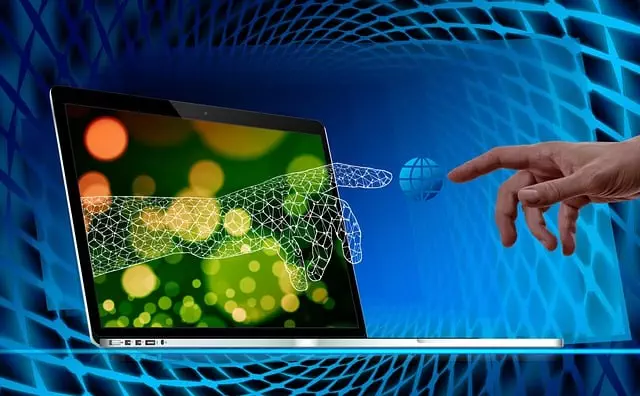Drivers in Toledo are demanding advanced entertainment features, leading to a revolution in car audio systems through Bluetooth audio and smartphone mirroring technologies. This integration enhances safety by providing hands-free control over music, podcasts, and navigation, keeping drivers' eyes on the road. The result is a more enjoyable and efficient daily commute, with modern vehicles offering versatile entertainment hubs tailored to today's connected drivers. While challenges exist regarding compatibility and privacy, the future of car audio in Toledo and beyond looks promising, with smart assistant integrations offering safer, smarter, and more enjoyable driving experiences.
In today’s digital age, the integration of smart assistants with car audio systems is transforming the driving experience. The demand for seamless connectivity and hands-free interaction has led to innovations like Bluetooth audio integration and smartphone mirroring. This article delves into these advancements, exploring their benefits, technical implementation, and future prospects. From understanding the need for car audio system integration in Toledo to examining the challenges of smartification, we uncover how these technologies are revolutionizing our on-the-go experiences.
- Understanding the Need for Car Audio System Integration
- Benefits of Bluetooth Audio Integration in Vehicles
- Exploring Smartphone Mirroring Integration: A Comprehensive Look
- Technical Aspects and Implementation of Smart Assistant Integration
- Future Prospects and Challenges in Car Audio Smartification
Understanding the Need for Car Audio System Integration
In today’s digital era, drivers are increasingly demanding seamless connectivity and advanced entertainment options within their vehicles. The traditional car audio system is no longer sufficient; it needs to evolve to meet the modern user’s expectations. This is where car audio system integration comes into play, specifically in cities like Toledo, offering a transformed driving experience. By integrating smart assistant features, such as Bluetooth audio and smartphone mirroring, automakers can provide drivers with intuitive control over their music, podcasts, and navigation systems.
These integrations not only enhance the overall enjoyment of the journey but also ensure that drivers remain safe by keeping their eyes on the road and hands on the steering wheel. With a simple voice command or touch of a button, drivers can access their favorite playlists, make hands-free calls, or receive turn-by-turn navigation instructions without compromising safety. This advanced technology is revolutionizing the way we interact with our vehicles, making daily commutes more enjoyable and efficient.
Benefits of Bluetooth Audio Integration in Vehicles
The integration of Bluetooth audio into car audio systems has revolutionized the driving experience, offering numerous advantages for modern drivers in Toledo and beyond. This technology allows for seamless smartphone mirroring, ensuring that your music, podcasts, and audiobooks are easily accessible while keeping your eyes on the road. With just a few touches or voice commands, drivers can switch tracks, adjust volumes, and even use their smart assistants to make calls or send messages hands-free.
Bluetooth audio integration enhances safety by reducing driver distractions, making it easier to navigate through traffic and park. It also improves convenience, as users can access their favorite playlists and media without the need for physical connections or complex interfaces. This feature has become increasingly popular in modern vehicles, transforming car audio systems into versatile entertainment hubs that cater to today’s connected drivers’ needs.
Exploring Smartphone Mirroring Integration: A Comprehensive Look
In today’s digital era, the seamless integration of smart assistant technology with car audio systems has become a game-changer for drivers seeking enhanced mobility experiences. One of the most popular and convenient features is smartphone mirroring integration, allowing users to connect their mobile devices via Bluetooth audio integration. This innovation enables drivers to access and control their smartphone functions directly from the car’s dashboard, promoting safer and more efficient interactions with essential applications.
The process involves pairing your smartphone with the car’s infotainment system, typically through a simple connection menu accessible on both devices. Once paired, users can mirror various smartphone activities, such as music streaming, navigation apps, and even phone calls, all controlled via voice commands or touch-based interfaces within reach while driving. This comprehensive look at smartphone mirroring integration reveals a powerful tool that not only simplifies daily commutes but also prioritizes driver safety by keeping eyes on the road and hands on the steering wheel.
Technical Aspects and Implementation of Smart Assistant Integration
The technical aspects of integrating a smart assistant with your car’s audio system involve seamlessly connecting your smartphone with the in-car entertainment hub. Bluetooth audio integration is a prevalent method, enabling wireless streaming of music and voice assistance from your phone to the car’s speakers. This process ensures minimal disruption during driving, allowing users to control their audio and receive navigation instructions hands-free.
Implementing this feature requires compatible hardware, such as a Bluetooth-enabled stereo head unit or an aftermarket upgrade that supports smartphone mirroring. Users can then pair their devices with the car audio system, enabling voice commands and touch controls to interact with their smart assistant. This integration offers a more intuitive and modern driving experience, combining advanced audio capabilities with intelligent personal assistance.
Future Prospects and Challenges in Car Audio Smartification
As technology continues to advance, the future of car audio looks set to be transformed by smart assistant integration. The potential for enhanced user experiences is immense; voice commands could control music playback, navigation, and vehicle settings, while smartphone mirroring via Bluetooth audio integration ensures drivers stay connected without distraction. This evolution promises improved safety and convenience, with real-time data access and hands-free operation.
However, challenges remain. Ensuring seamless compatibility between diverse smartphone operating systems and car audio systems in Toledo or any other region is crucial for widespread adoption. Privacy concerns surrounding voice data and the need for robust cybersecurity measures are also paramount. Moreover, the constant evolution of technology requires continuous updates to keep smart assistant features relevant and effective against emerging competitors, such as advanced driver-assistance systems (ADAS). Despite these hurdles, the prospects for a smarter, safer, and more enjoyable driving experience through car audio system integration, Bluetooth audio, and smartphone mirroring look promising.


